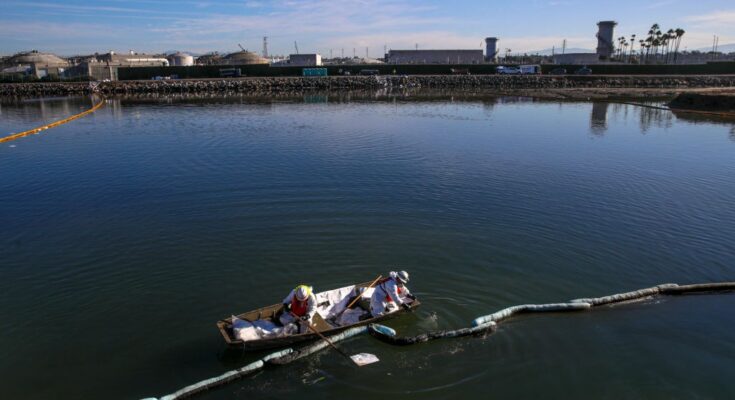driller Amplify Energy Corp. it took more than three hours to contain California’s worst oil spill in nearly three decades, according to a government report.
After a low pressure alarm around 2:30 a.m. on Oct. 2 from its San Pedro Bay Pipeline, Amplify’s Beta Offshore unit did not shut down the pipeline until 6:01 a.m., the Safety Administration of Pipelines and Hazardous Materials of the US Department of Transportation. he said in a corrective action order Tuesday.
The company did not return messages seeking comment.
While all the details are not known, “the facts that are being reported are very concerning to us,” said Bill Caram, executive director of the Pipeline Safety Trust, a group that engages with pipeline operators. Operational reasons can cause a pipeline to suddenly lose pressure, but “we would have expected a pipeline to shut down a line much faster than three hours” and also report it more quickly, he said.
The Golden State’s largest oil spill since a 1994 earthquake ruptured a pipeline spilling up to 3,000 barrels along the California coast, according to Amplify estimates. The oil went south, forcing the closure of popular surfing beaches and polluted wetlands.
Divers found a 13-inch split in the pipeline that was “the likely source of the oil release,” U.S. Coast Guard spokeswoman Rebecca Ore said at a briefing Tuesday. About 4,000 feet of the pipeline was “moved laterally by 105 feet.”
Amplify CEO Martyn Willsher told the briefing that footage showed the pipeline being “pulled like a bowstring”. This type of dislocation is “not common,” he added.
He said his company did not confirm the leak until about 8 a.m., when an oil sheen was identified on nearby waters.
“Regardless of the cause, we’re going to do everything we can to make things right,” Willsher said.
After shutting down the pipeline, Beta did not report the incident to the National Response Center for another three hours, according to the report. Initial estimates indicated the pipeline released about 700 barrels, far less than the company’s number.
Beta Offshore was ordered to review and assess the effectiveness of its emergency response plan, including “response and on-scene support, coordination, notification and communication with emergency responders and public officials “, according to the document. PHMSA did not specify whether the time taken to shut down the line and notify the National Response Center was too slow or inadequate.
An email and call to PHMSA regarding the appropriateness of the three-hour wait was not immediately returned.
The cause of the accident remains unconfirmed, but “preliminary reports indicate that the failure may have been caused by an anchor that tripped the pipeline, causing a partial tear,” according to the order. There is no confirmation on a ship that caused the leak.
-With the assistance of Mike Jeffers.



